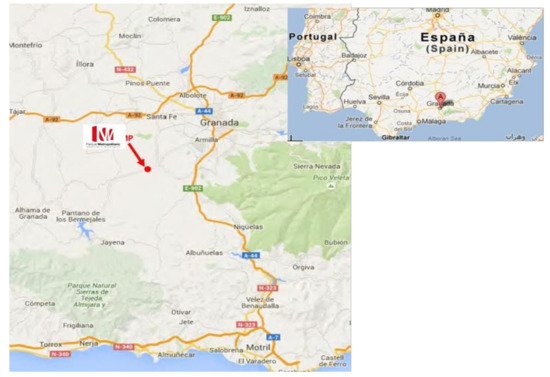Nuclear facilities are a main milestone in the long way to sustainable energy. Beyond the well-known fission centrals, the necessity of cleaner, more efficient and almost unlimited energy reducing waste to almost zero is a major challenge in the next decades. This is the case with nuclear fusion. Different experimental installations to definitively control this nuclear power are proliferating in different countries. However, citizens in the surroundings of cities and villages where these installations are going to be settled are frequently reluctant because of doubts about the expected benefits and the potential hazards.
- sustainable development
- psychosocial risks
- socioeconomic impact
- nuclear facilities
1. The International Fusion Materials Irradiation Facility—Demo-Oriented NEutron Source (IFMIF-DONES)

2. Perceived Psychosocial Hazards
This entry is adapted from the peer-reviewed paper 10.3390/su14020899
References
- International Thermonuclear Experimental Reactor (ITER) website. Available online: https://www.iter.org/ (accessed on 21 October 2021).
- Joint European Torus (JET) Website. Available online: https://www.euro-fusion.org/devices/jet/ (accessed on 21 October 2021).
- IFMIF-DONES website. Available online: https://ifmifdones.org (accessed on 21 October 2021).
- Królas, W.; Ibarra, A.; Arbeiter, F.; Bernardi, D.; Cappelli, M.; Castellanos, J.; Dezsi, T.; Dzitko, H.; Favuzza, P.; Garcia, A.; et al. The IFMIF-DONES fusion oriented neutron source: Evolution of the design. Nuclear Fusion 2021, 61, 125002.
- European Union. Agreement between the European Atomic Energy Community and the Government of Japan for the Joint Implementation of the Broader Approach Activities in the Field of Fusion Energy Research. Off. J. Eur. Union. 2007. Available online: https://eur-lex.europa.eu/legal-content/EN/TXT/PDF/?uri=CELEX:22007A0921(01)&from=EN (accessed on 3 December 2021).
- European Commission website/European Regional Development Fund. Available online: https://ec.europa.eu/regional_policy/en/funding/erdf (accessed on 21 October 2021).
- EUROfusion website. Available online: https://www.euro-fusion.org (accessed on 21 October 2021).
- Esteban, R.; Troya, Z.; Herrera-Viedma, E.; Peña-García, A. IFMIF-DONES as paradigm of institutional funding in the way towards sustainable energy. Sustainability 2021, 13, 13093.
- International Labour Office (ILO). Available online: https://www.ilo.org/global/lang--en/index.htm (accessed on 21 October 2021).
- International Labour Office (ILO). Psychosocial Factors at Work: Recognition and Control; International Labour Office: Geneva, Switzerland, 1984; Available online: https://www.who.int/occupational_health/publications/ILO_WHO_1984_report_of_the_joint_committee.pdf (accessed on 3 December 2021).
- Kalimo, R.; El Batawi, M.A.; Cooper, C.L. Psychosocial Factors at Work and their Relation to Health; WHO: Geneva, Switzerland, 1988.
- World Commission on Environment and Development. Our Common Future; Oxford University Press: Oxford, UK, 1987.
- Peña-García, A.; Hurtado, A.; Aguilar-Luzón, M.C. Impact of public lighting on pedestrians’ perception of safety and well-being. Saf. Sci. 2015, 78, 142–148.
- Peña-García, A.; Hurtado, A.; Aguilar-Luzón, M.C. Considerations about the impact of public lighting on pedestrians’ perception of safety and well-being. Saf. Sci. 2016, 89, 315–318.
- Peña-García, A.; Nguyen, T.P.L. A global perspective for sustainable highway tunnel lighting regulations: Greater road safety with a lower environmental impact. Int. J. Environ. Res. Public Health 2018, 15, 2658.
- Qin, P.; Wang, M.; Chen, Z.; Yan, G.; Yan, T.; Han, C.; Bao, Y.; Wang, X. Characteristics of driver fatigue and fatigue-relieving effect of special light belt in extra-long highway tunnel: A real-road driving study. Tunn. Undergr. Space Technol. 2021, 114, 103990.
- Slovic, P.; Flynn, J.H.; Layman, M. Perceived risk, trust, and the politics of nuclear waste. Science 1991, 254, 1603–1607.
- Slovic, P.; Layman, M.; Kraus, N.; Flynn, J.; Chalmers, J.; Gesell, G. Perceived Risk, Stigma, and Potential Economic Impacts of a High-Level Nuclear Waste Repository in Nevada. Risk Anal. 1991, 11, 683–696.
- Kleindorfer, P.R.; Kunreuther, H.C. Chapter 11 Siting of hazardous facilities. Handbooks in Operations Research and Management Science 1994, 6, 403–440.
- Grove-White, R.; Kearnes, M.; Macnaghten, P.; Wynne, B. Nuclear Futures: Assessing Public Attitudes to New Nuclear Power. Political Q. 2006, 77, 238–246.
- Chilvers, J.; Burgess, J. Power Relations: The Politics of Risk and Procedure in Nuclear Waste Governance. Environ. Plan. A: Econ. Space 2008, 40, 1881–1900.
- Pidgeon, N.F.; Lorenzoni, I.; Poortinga, W. Climate change or nuclear power—no thanks! A quantitative study of public perceptions and risk framing in Britain. Glob. Environ. Chang. 2008, 18, 69–85.
